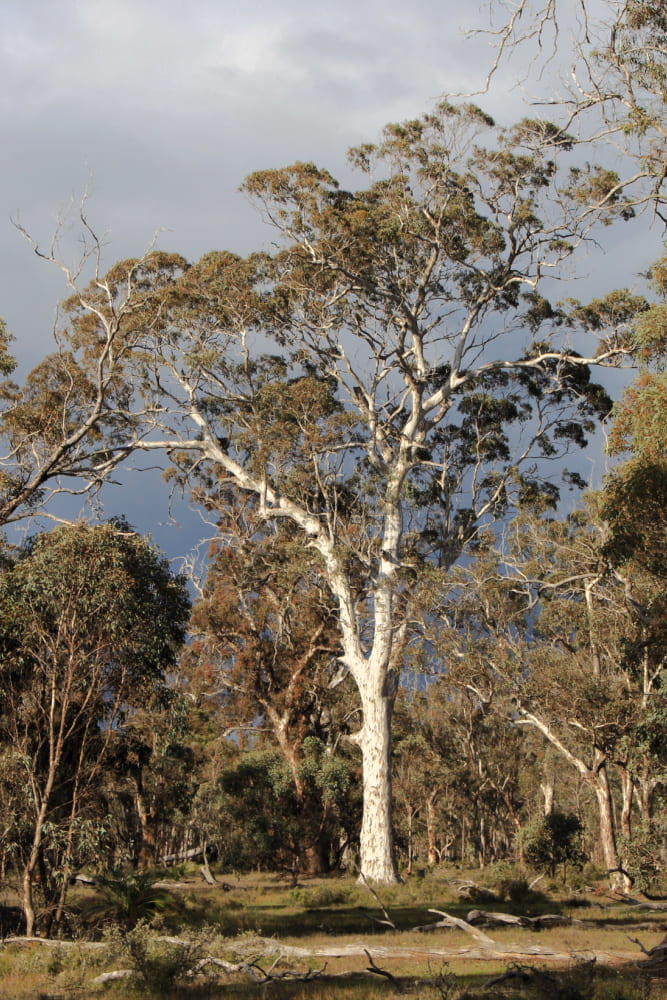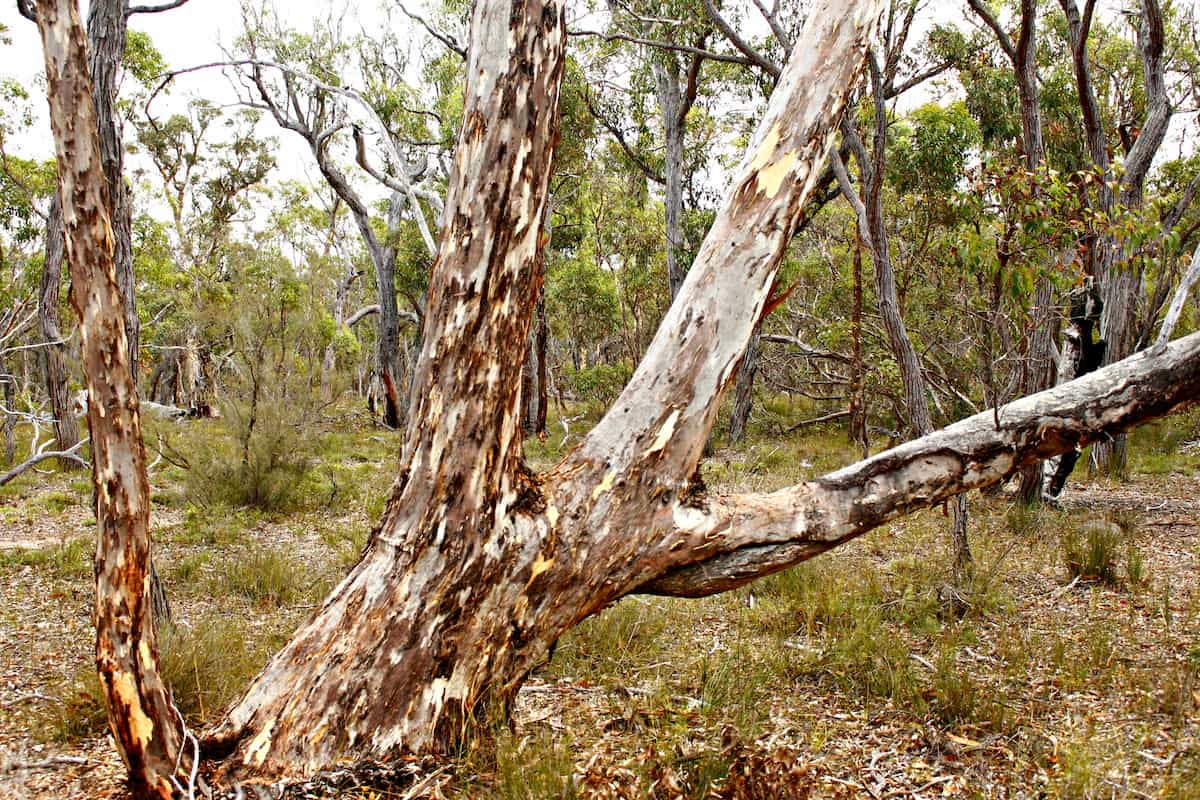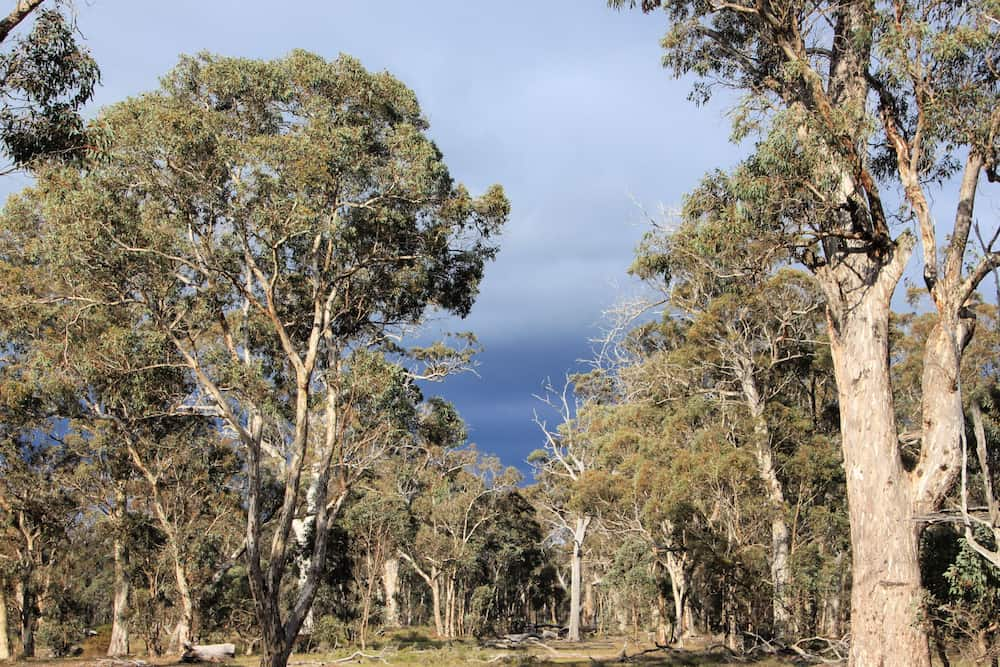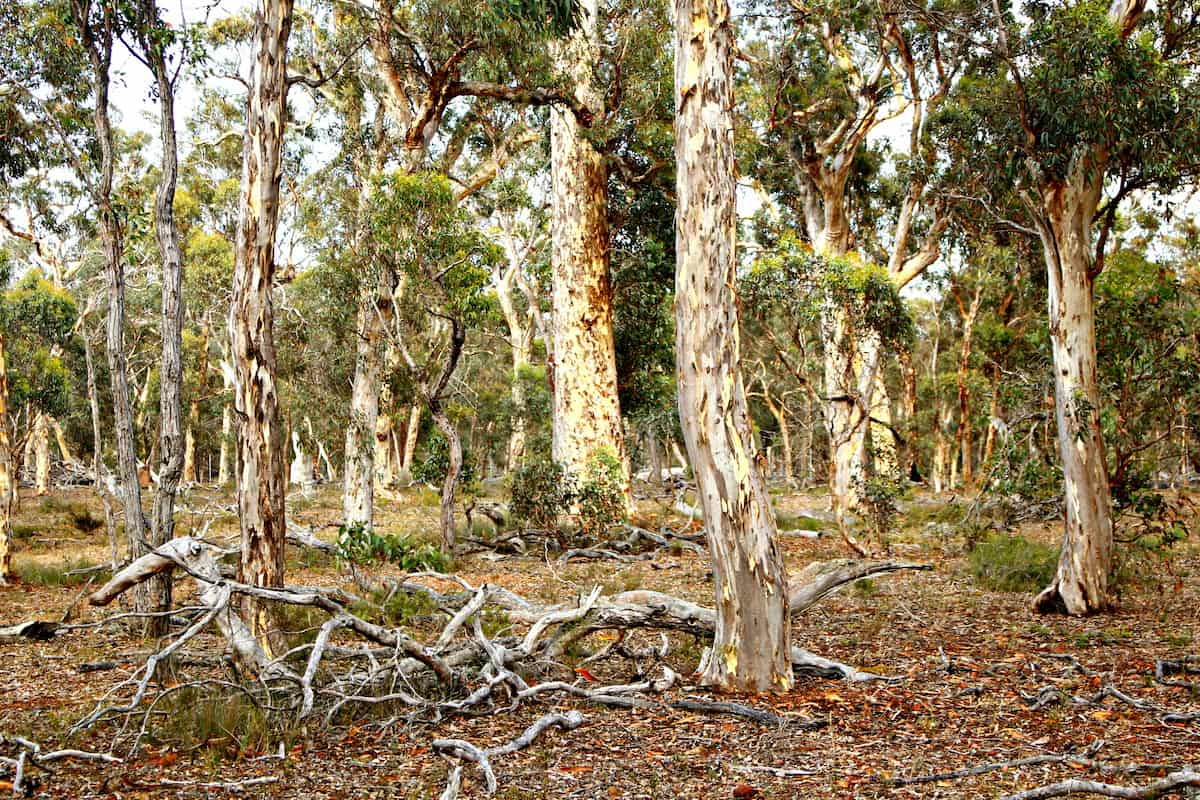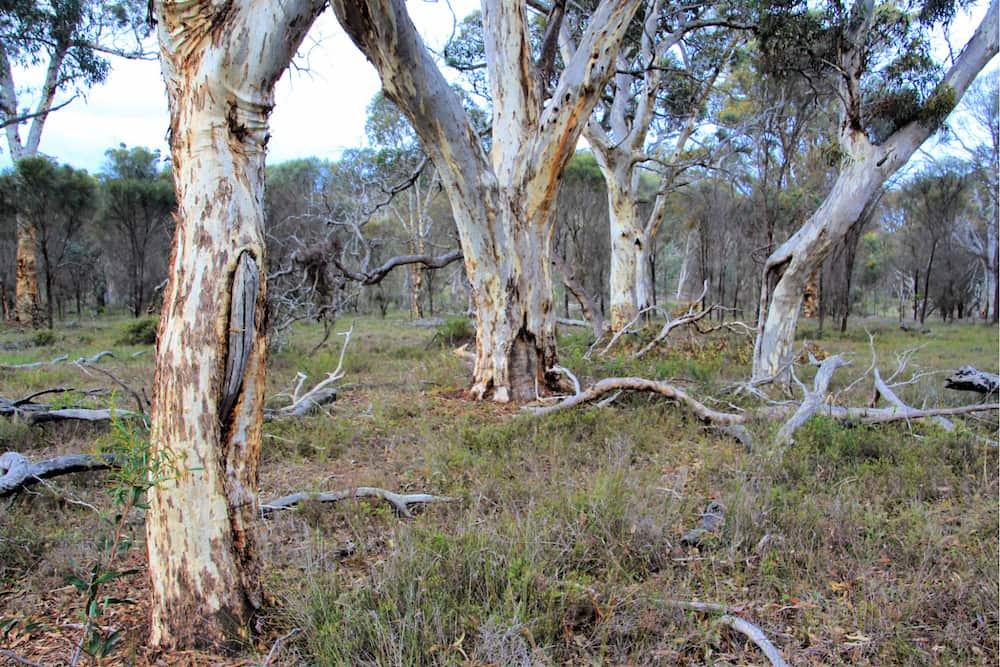Wandoo
An important eucalypt
Wandoo (Eucalyptus wandoo) is endemic to the south-western Australia and one of the region’s most important eucalypts – culturally significant to Noongar people and to the European settlers. It is a large tree, up to 20 metres tall, and can reach a grand old age.
Ecologist Nathan McQuoid describes the wandoo as being unique in that its Noongar, common and botanical names are the same.
“Wandoo woodlands are often characterised by their stands of open, widely spaced trees over sparse yet rich understoreys of herbs and grasses.”
Nathan McQuoid, Lifting the Bonnet on Wheatbelt Woodlands
In healthy wandoo woodlands, the range of trees and shrubs that flower at different times of the year provide a continuous source of nectar for birds such as honeyeaters, and insects, which in turn provide food for insectivorous birds such as the western yellow robin, golden whistler and rufuous treecreeper.
Nature’s boarding house
Wandoo is used by so many different species of animal that it has been called ‘nature’s boarding house’ or ‘nature’s apartment’.
“Hollows in mature trees provide homes for brush-tailed phascogales, bats and a range of birds; while fallen hollow logs house possums, numbats, chuditch, echidnas, pythons and monitors… the crown of the tree provides food for a multitude of insect species, which in turn provide food for predatory insects and insectivorous birds. Possums feed on the leaves, and nectar-eating birds and insects are attracted in large numbers when the tree is in flower. Many kinds of bird, including wedge-tailed eagles, build nests in the canopy.”
Andrea Gaynor, Wandoo in health and decline: a history
Many uses of wandoo
For Noongar people, the wandoo was used like other eucalypts, as a medicinal plant noted for its antibacterial properties, with the leaves used in poultices or steamed to relieve congestion. The gum was ground and used as an ointment.
Bu the wandoo also has sweet and juicy outer parts on the roots which were scraped off and eaten. The flowers were soaked in water and made into a sweet drink.
For the colonisers, wandoo was mostly valued as an excellent hardwood timber, and was logged extensively until the 1970s.
Loss of the woodlands
“By the end of the twentieth century, most of the wandoo woodlands had been cleared for farming or placed in forest reserves, where the timber was harvested with varying degres of intensity… the remnant wandoo woodlands were generally those areas unsuited to agriculture such as those with gullies, rock outcrops or the presence of York Rd poison or other poisonous plants in the understorey.
What remains is therefore quite unrepresentative of the original vast expanse of wandoo woodlands.”
Andrea Gaynor, Wandoo in health and decline: a history
Wandoos in decline
Since the 1980s many wandoo trees and woodlands are in poor health, noticeable in the decline of the tree crown. Scientists suggest a large range of factors might be contributing this decline:
- land clearing
- climate variability and change, such as reduced rainfall and increased temperatures
- altered fire regimes
- increasing salinity
- and activities of insects like jewel beetles and fungal pathogens.
Although clearing of wandoo has largely ceased, many remaining wandoo trees are dying while natural regeneration and tree planting efforts are not keeping pace with the rate of loss.
Furthermore, competition for sought after hollows (that only start to form when the trees are between 150 and 200 years old) by feral bees and non-native bird species is seriously diminishing the habitat value of existing trees.
Further Reading
Andrea Gaynor, 2008, Wandoo in health and decline: a history
Nathan McQuoid, 2014, Lifting the Bonnet on Wheatbelt Woodlands: a guide to the connection between landscape and vegetation in Southwest Australia, WWF-Australia
Wandoo Recovery Group, 2006, Wandoo Crown Decline: Situation Statement

